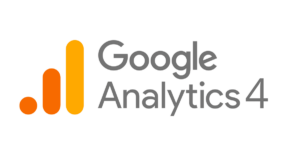
The Digital Analytics Landscape is Changing
The world of digital analytics is on the cusp of a significant transformation. As Google phases out Universal Analytics (UA) in favour of Google Analytics 4 (GA4), businesses and webmasters must adapt to this change to continue leveraging the power of data analytics effectively. The transition from UA to GA4 is not just a simple update; it’s a complete overhaul of the analytics platform, offering new features, improved integration capabilities, and a more user-centric approach to data collection and analysis.
Why Make the Switch to GA4?
GA4 represents the next generation of Google Analytics. Unlike its predecessor, GA4 is designed with privacy in mind, providing more robust data collection methods in an increasingly cookie-less world. Its cross-platform tracking capabilities offer a more comprehensive view of the customer journey, integrating data from websites, mobile apps, and other digital platforms.
Preparing for the Transition
- Understand the Differences: Begin by familiarising yourself with the key differences between UA and GA4. The new interface, reporting features, and data modelling techniques in GA4 might seem daunting initially, but understanding these changes is crucial for a smooth transition.
- Set Up a GA4 Property: Even if your UA account is still active, set up a GA4 property as soon as possible. This allows you to start collecting data in the new format, ensuring you have historical data to work with once UA is phased out.
- Reconfigure Your Tracking: GA4 offers more flexible and comprehensive tracking setups. You may need to reconfigure your existing tracking setup, including event tracking and conversion measurements, to align with GA4’s new data model.
- Learn About New Features: Explore GA4’s new features, like enhanced AI-driven insights, improved integration with Google Ads, and more granular user privacy controls. These features will be instrumental in shaping your future analytics strategies.
- Training and Support: Invest in training for your team. Utilizing resources such as Google’s Skillshop, webinars, and community forums can significantly ease the transition.
Embrace the Change
Transitioning from UA to GA4 is not just a technical shift; it’s an opportunity to refine your analytics strategy and gain deeper insights into your audience and their behaviour. While the switch may seem challenging, embracing GA4 will position your business at the forefront of digital analytics capabilities.
Remember, change is the only constant in the digital world. By transitioning to GA4, you’re not just keeping up with the times; you’re paving the way for future success in a data-driven landscape.
Leave a Reply